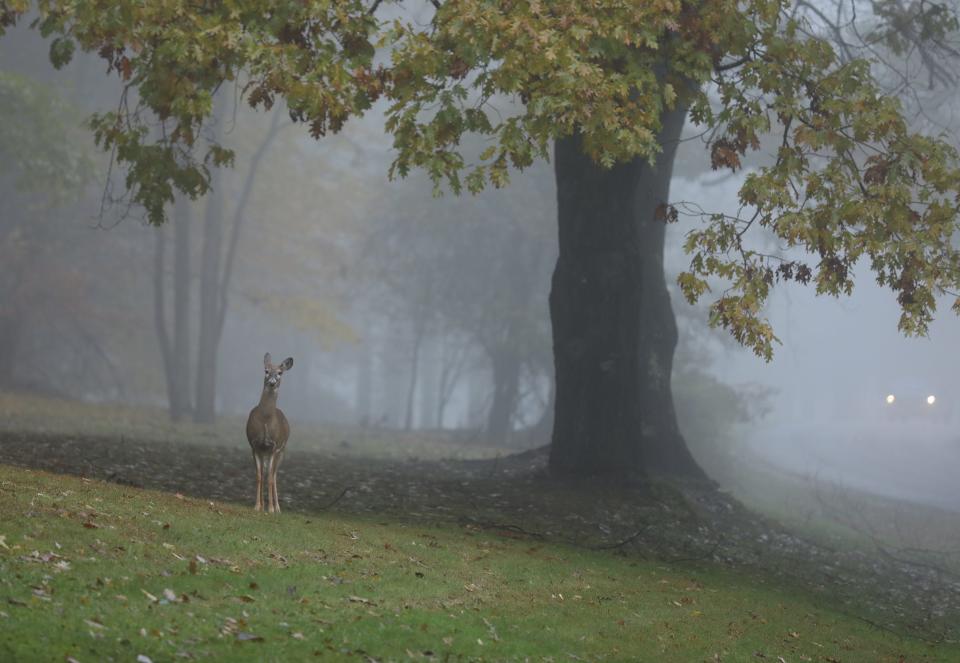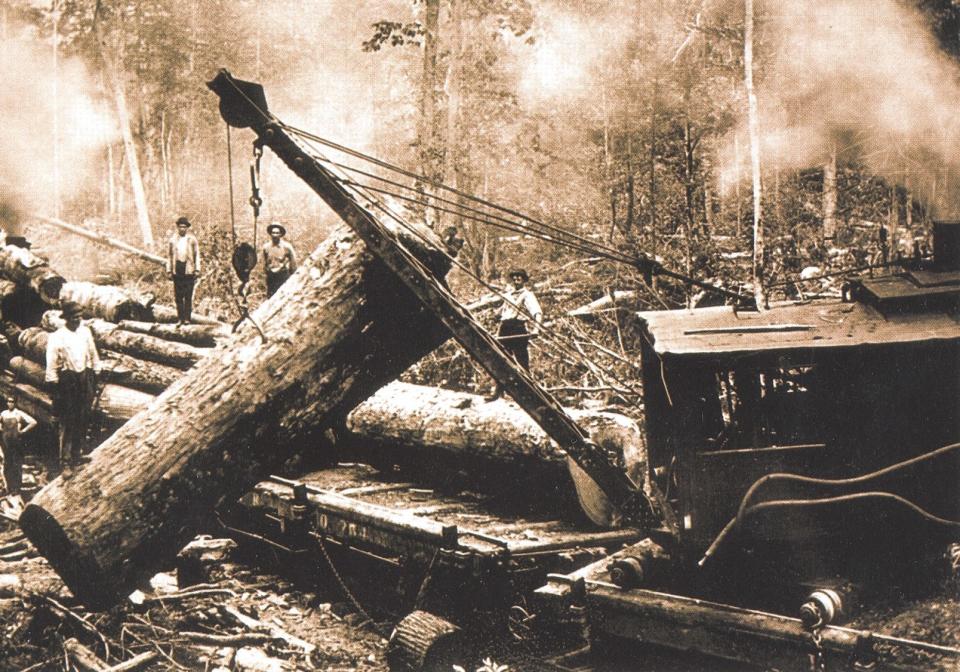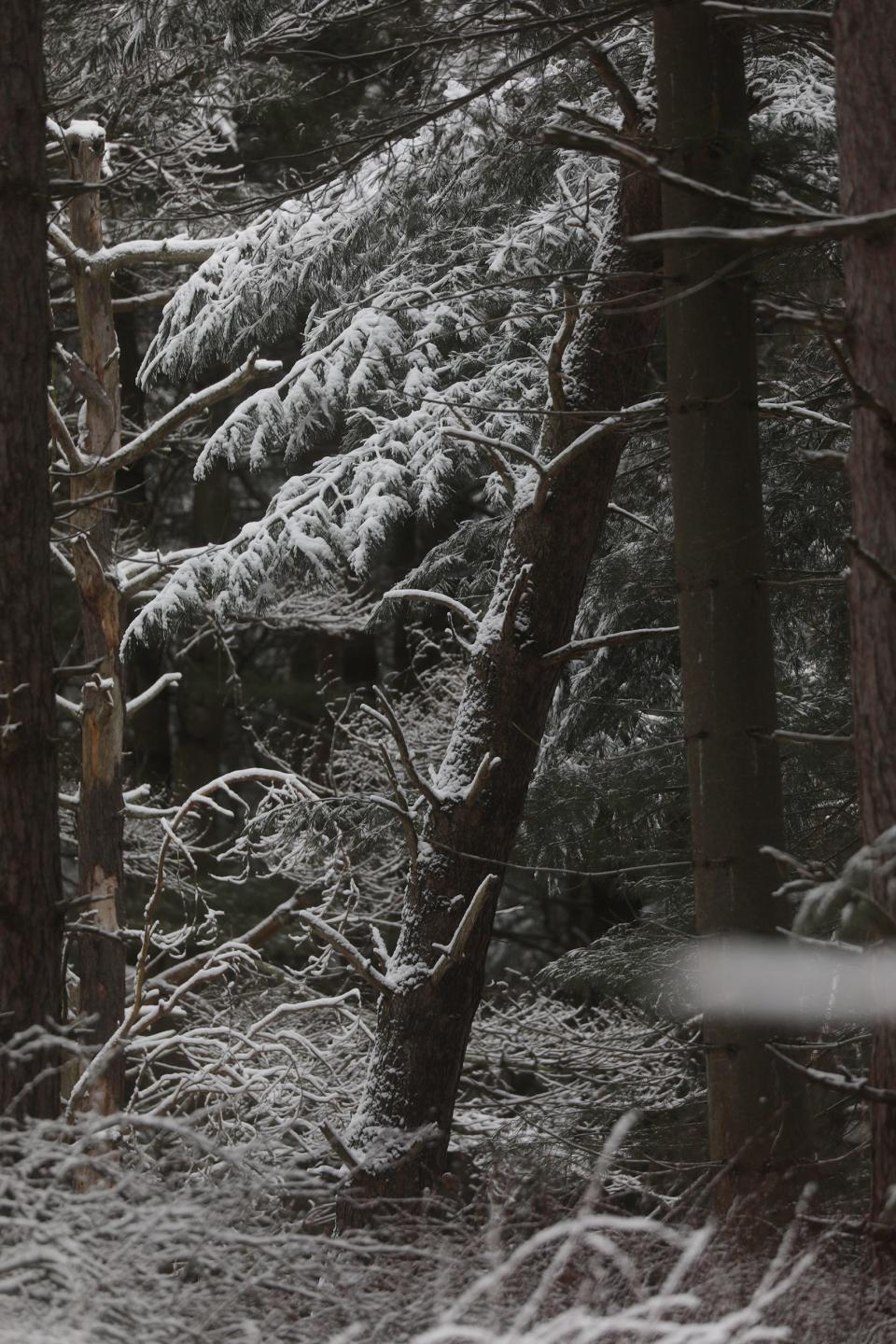What are 'lingering trees' and why do they matter in NY?
New York state, as any upstate resident will tell you, is a lot more than New York City. It’s rolling hills, rivers and lakes, bucolic farmland and acres of forests. In fact, of the state’s 30.2 million acres, 18.6 million are classified as forests.
Those forests are under attack by disease and invasive species, with some of the state’s native species in the most duress. Beech leaf disease, hemlock woolly adelgid and the emerald ash borer have been devastating their respective tree species. Some scientists predict hemlocks may be lost in the southern Adirondacks within this generation.
What are 'lingering trees' and why do they matter?
Researchers have noticed, however, not every tree in a stand will be destroyed by insects and disease. These survivors are known as “lingering trees.”
“Lingering trees are, quite simply, trees that stay alive or stay moderately healthy when all the other trees around them are either dead or dying from the impact, in most cases, of some kind of pest or pathogen,” said Tammara Van Ryn, project manager of the Adirondack Park Invasive Plant Program.
The Adirondack Park Invasive Plant Program is a partnership founded by The Nature Conservancy, New York State Department of Environmental Conservation, New York State Department of Transportation and New York State Adirondack Park Agency.
More: Invasive species wreaking havoc in NY. Here are some of the most notorious
Some pests, like the invasive emerald ash borer, can kill trees in just three to four years. Researchers will set up monitoring plots where these infestations occur and have found there is typically one or two that are still alive. Those trees have some sort of genetic distinction, Van Ryn said, and researchers are working to determine what that is.
“We don’t know all the science behind it, but nature is telling us something is going on with this tree that’s different from other trees,” said Van Ryn. “And so if we can collect seeds from these trees or just cuttings of those trees … and grow them, that’s where hope lies for the future of these species.”

Protecting New York's forests
The U.S. Forest Service has found selective breeding of lingering ash trees can lead to offspring that are highly resistant to emerald ash borers within two generations. In some sites the agency monitored, less than 1% of the mature ash trees survived to lingering status; the live trees would sometimes be found right alongside trees killed by emerald ash borers.
The trees selected for resistance breeding had to meet criteria such as 95% mortality of other ash trees at the site, size, health of its canopy, and to be naturally occurring.
Studying the surviving trees from stands affected by pests and disease is a very different approach from the way arborists of the early 20th century handled the chestnut blight that arrived with the import of Japanese chestnut trees. By 1940, more than 3.5 billion American chestnut trees succumbed to the disease caused by a fungus, according to the Cornell University College of Agriculture and Life Sciences.

At the time, the U.S. Forest Service told landowners to cut down their chestnut trees, which were a source of lumber, to get value out of them and help curb the spread of the disease, Van Ryn said.
“So there was never an effort … at that time anyway, to try and save these genetic reservoirs of potentially resistant chestnut trees,” she said. “Nowadays, the American Chestnut Foundation is still finding lingering chestnut trees and is trying to do that.”
How you can help protect New York's forests
The technology of the modern day allows for better communication between researchers around the country in the search for these resistant trees. It has also mobilized citizen scientists to help participate through apps like Tree Snap to find those reservoirs of resistant trees, Van Ryn said.
Tree Snap was developed by scientists at the University of Kentucky and University of Tennessee and is funded in part by the U.S. National Science Foundation Plant Genome Research Program. The app, available for Android and iOS, allows users to submit images of trees including American chestnuts, American elms and most species of American ash trees, including the white, green, black and blue ash.

Users can simply snap a photo of one of the qualifying trees and the location is recorded to be used for researchers. A generalized location is available to the public, but only the app administrators or the user who submitted it, can see the precise location, adding a layer of anonymity to submissions.
Monitoring these threats to New York’s forest, particularly in the Adirondack park, is important to protect other aspects of life. If native trees are wiped out by pests and disease, the impacts would reverberate throughout the state.
The stream habitat for trout could heat up if hemlock trees are lost. Beech and hemlock trees are part of the wood pulp and paper industries. Trees are important for carbon sequestration as part of the state’s climate goals.
Even away from the untamed wilderness, threats to trees can have an impact. Many ash trees were planted after Dutch elm disease killed trees along city streets or in urban backyards. Now they’re threatened and it can be expensive to remove those trees and potentially hazardous to not.
“So even if you’re not someone who spends their time in the forests, those forests are important for wildlife, for our economy, for our carbon sequestration potential,” Van Ryn said. “But also locally, close to home, you want to be helping to find the solutions to pests and pathogens because they cost your communities money.”
More: Building a more bikeable Rochester: Sights from behind the handlebars
— Steve Howe covers weather, climate and lake issues for the Democrat and Chronicle and competed in Envirothon during his high school years. Share with him at [email protected].
This article originally appeared on Rochester Democrat and Chronicle: What are 'lingering trees' and why do they matter in New York?
